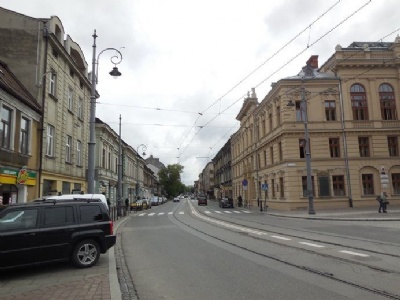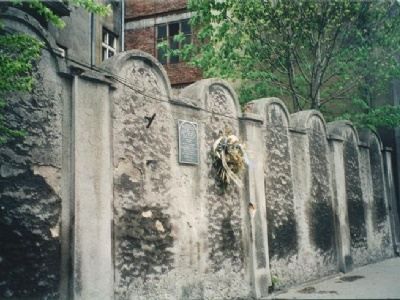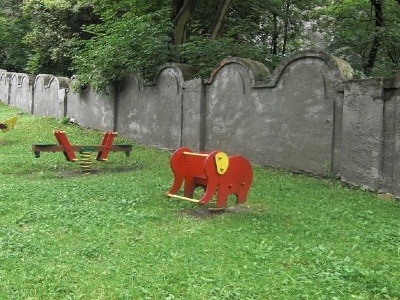Krakow Ghetto
When the Germans occupied Poland, there were about 65,000 Jews living in the city, which represented about a quarter of Krakow’s population. The majority of the Jews lived in the Kazimierz district. Immediately anti-Jewish laws were introduced that restricted the rights of Jews. Krakow was within the scope of the General Government and in November, 1939, a law was introduced that all Jews over twelve years old should wear a blue-white armband with a star of David as identification. Krakow also became the capital of the General Government and hardcore Nazi, Hans Frank, became governor general and established his office in Wawel castle. In 1940, the Nazis began deporting the Jews to other towns and villages outside Krakow.
By March 1941, the majority had been deported but about 15,000 Jews working in German industries were allowed to remain in Krakow. That same month, the Nazis decided to set up a ghetto in the Podgorze district in southern Krakow for the remaining Jews. About 3,000 non-polish Jews living in Podgorze district had to move to Kazimierz. And about 15,000 Jews living in Kazimierz had to move to Podgorze. Given the minimal living space and the number of limited apartments, several families were forced to share an apartment. Jews from nearby villages were also deported to the Krakow ghetto, and a total of about 20,000 Jews lived in the ghetto.
The ghetto was surrounded by a wall and only Jews with special work permits were allowed to move freely between the ghetto and rest of the city. These Jews usually worked in a industry own by the germans. One such factory was Oskar Schindler’s Deutsche Emaillewaren-Fabrik, which was established just outside the ghetto. Here, several of the Jews were given refuge because they were protected by Schindler. In March 1942, the Nazis began to deport unproductive and superfluous Jews to the newly opened extermination camp at Belzec. About 13,000 Jews were deported in the second half of 1942.
There was a Jewish resistance movement in the ghetto that, unlike other ghetto resistance movements, chose to fight the Germans outside the ghetto through sabotage and assassination attempt. Such an attempt was carried out in the days before Christmas 1942. A bomb exploded at the well-attended Cyganeria cafe in central Krakow, killing twelve Germans. In 1943, the Nazis liquidated the ghetto. During liquidation a large number of Jews were murdered, about 2000 were sent to Auschwitz where they were murdered, The remaining were sent to newly built concentration camp Plaszow just south of the ghetto.
Current status: Partly preserved/demolished with monument (2015).
Address: Na Zjezdzie, 30-527 Kraków (square).
Get there: Tram from central Krakow.
Follow up in books: Gilbert, Martin: The Holocaust: A History of the Jews of Europe During the Second World War (1987).





The Ghetto monument is located in the former ghetto square. The monument is among the strangest I’ve seen. It consists of 33 chairs that are placed all over the square. It reminds of the monument in Oslo where 8 chairs are placed in a similar way down by the harbor (the monument in Oslo was established in 2000 while in Krakow it was established in 2005). Parts of the ghetto wall have been preserved at two sites (Lwowska and Limanowskiego) and parts of Schindler’s factory are still there. Thanks to, or because of the movie Schindler’s list, there is a great commercialism around ghetto and Krakow’s Jewish quarter. Unfortunately, in Krakow, the Holocaust has also become a business idea. Hotels, shops, restaurants and other business have understood that there is money to be made from the Holocaust in ways not necessary worthy. Tourists are keen to visit filming locations from Schindler’s list, the Plaszow concentration camp, the ghetto, Schindler’s factory and Auschwitz.